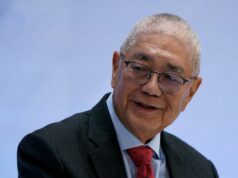Rediscount loans rise in 2019
LENDERS did not tap the central bank’s rediscount facility for the second consecutive month in December, with an analyst saying banks likely have enough liquidity due to the reserve requirement reductions implemented in 2019.
Peso rediscount loans totalled P122.167 billion for the the whole of 2019, unchanged for two months since its end-October period “due to non-availment from rediscounting banks in December 2019,” the central bank said on Friday.
However, total availments climbed 70% compared to the P71.524 billion seen in 2018.
The BSP allows lenders to tap additional money supply by posting their collectibles from clients as collateral through the rediscount window.
This gives banks the chance to use fresh cash — which could be in peso, dollar, or yen — to disburse more loans for corporate or retail clients and service unexpected withdrawals.
Rizal Commercial Banking Corp. Chief Economist Michael L. Ricafort said banks may have opted to not tap the rediscount facilities for two consecutive months due to the added liquidity coming from the reserve requirement ratio (RRR) cuts the central bank imposed in 2019.
“Thus, banks have additional peso funds worth more than P200 billion after the RRR cuts took effect for both months,” he said in an email.
To recall, the BSP announced RRR cuts worth 100 basis points (bp) each in September and October which took effect on November and December, respectively.
Last year, reserve requirements were slashed by a total of 400 bps, bringing the RRR of universal and commercial banks to 14%, while that of thrift and rural lenders went down to five and three percent, respectively.
BSP Governor Benjamin E. Diokno has vowed to reduce RRR of lenders to the single-digit level by the end of his term in mid-2023.
Aside from the RRR cuts, the tweaks in the definition for deposit substitutes may have also affected banks’ decision to not tap the rediscounting facilities of the BSP.
“The redefinition of deposit substitutes to exclude interbank borrowings (effectively exempting them from RRR) would have also encouraged banks to get more peso funding through interbank borrowings, as an alternative to tapping the BSP rediscounting facilities,” Mr. Ricafort said.
The Monetary Board in November adopted the new definition of deposit substitutes as amended by the New Central Bank Act which was signed into law in February.
Mr. Diokno has said the tweak in the definition of deposit substitutes may released some P28 billion into the financial system.
According to the statement from the central bank, the bulk of the loans in the past year were utilized for other credits which comprise 65.13% of the total rediscounting loans. Included in this chunk are those that went to capital asset expenditures (38.75%), commercial credits (34.86%), loans to other services (19.62%), permanent working capital (6.72%), as well as housing loans (0.04%).
More than a third (34.86%) of the total borrowings went to commercial credit. Banks utilized this to disburse loans related to importation (24.93%), trading (9.92%), and export (0.01%) of goods or products.
Meanwhile, production credits or those used for agricultural production only made up 0.01% of the total rediscounting loans.
REDISCOUNT RATE REVAMPS
In a circular letter, Mr. Diokno said the Monetary Board has approved revisions to the computation of the rediscount rates for peso, dollar, and yen loans.
Mr. Diokno said that applicable peso rediscount rates will be the overnight lending rate of the central bank which currently stands at four percent plus “a spread depending on the term of the loan” determined by the BSP.
“The spread between these two may change periodically to complement changes in the Bangko Sentral’s monetary policy goals,” he said.
Meanwhile, rates for the dollar or yen-denominated loans will be based on the 90-day London Inter-Bank Offered Rate (LIBOR). If there is no LIBOR, “an applicable benchmark rate, plus an appropriate spread depending on the term of the loan as may be determined by the Bangko Sentral.”
Mr. Diokno said the spread between the rates for dollar and yen rediscount loans may be indicative of the changes in the market interest rates “and to achieve monetary policy objectives.”
For this month, rediscount rates are at 4.5625% for peso loans with a tenor of 90 days or less, while those with a 91- to 180-day term are priced at 4.625%.
These are based on the latest available BSP overnight lending rate plus a premium.
On the other hand, the Exporters Dollar and Yen Rediscount Facility for the dollar credit lines are placed with rates of 3.90838% for loans maturing from one to 90 days; 3.97088% for those with a tenor within a 91- to 180-day time frame; and 4.0338% for those with a term of 181 to 360 days.
Meanwhile, yen loans in January are placed at a rate of 1.95267% for one to 90-day loans; 2.01517% for 91- to 180-day loans; and 2.07767% for loans maturing within a 181- to 360-day period.
These are based on the 90-day LIBOR as of end-December plus 200 basis points, plus term premia. — Luz Wendy T. Noble



